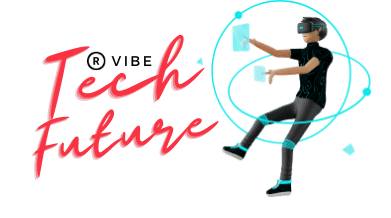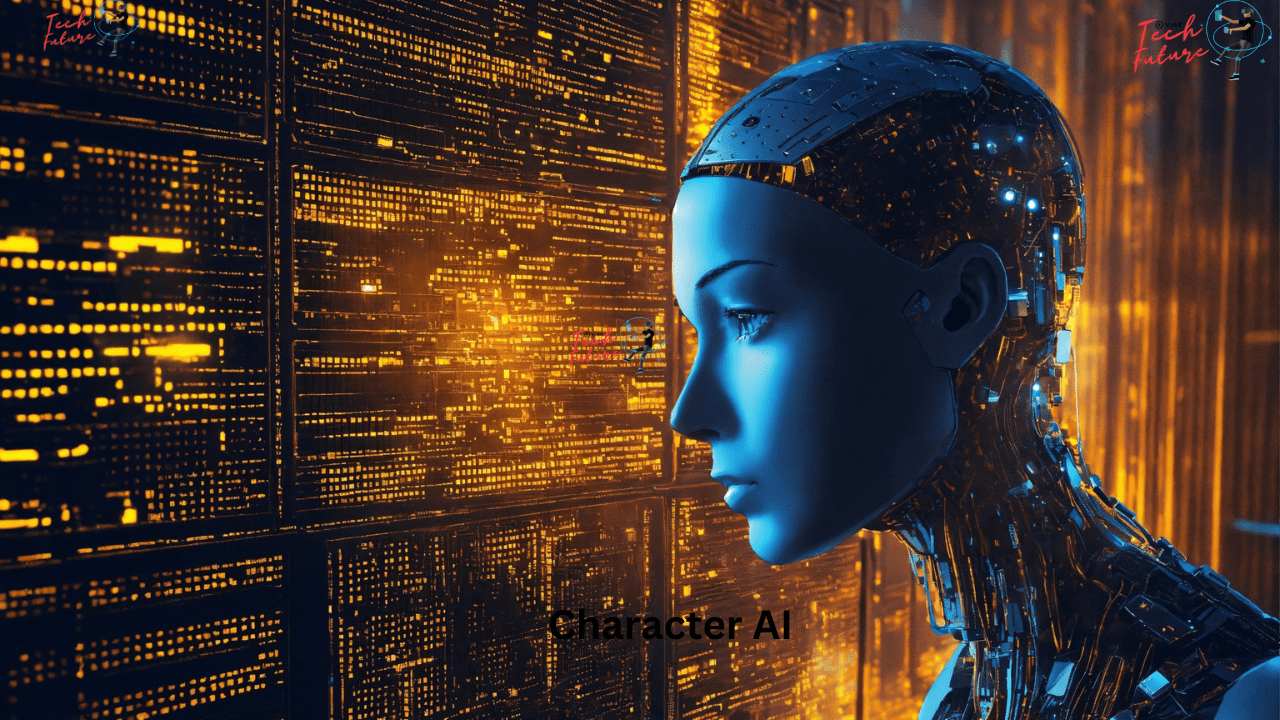Introduction To Character AI
In the evolving world of technology, the emergence of character AI has revolutionized the way we write. This article sheds light on the nuances of character AI, exploring its capabilities, applications, benefits, and challenges for the traditional world of writing.
Brief Overview of Character AI
In the fascinating world of technology, the character AI emerges as a master of digital art, an artificial intelligence that composes symphonies of words. This advanced creation reaches far beyond the mundane realm of mere automation, it is a digital chameleon cleverly dressed in human writing style. It’s not just imitation; It’s an artistic shift that pushes him into a complex realm. Imagine a digital script capable of producing content so seamlessly that distinguishing it from human creations becomes a delightful challenge.
Importance of AI in Writing
In the emerging digital age, the insatiable demand for quality content remains a driving force. To meet this need, artificial intelligence (AI), especially character AI, has become a key asset for authors and enterprises. This transformative technology revolutionizes the way we write today by providing efficient, dynamic solutions for creating diverse and engaging content.
Enhancing Efficiency
One of the key contributions of artificial intelligence (especially character AI) is its ability to make content creation more efficient. By automating certain aspects of the writing process, it allows writers to allocate their time and energy more strategically. AI can handle mundane and repetitive tasks, freeing up creative minds to focus on the subtle aspects of storytelling and expression.
Diversity in content creation
The role of AI, especially in the form of character AI, goes beyond mere automation. It is a catalyst for injecting diversity into content creation. The technology can analyze large data sets and learn different writing styles, tones, and genres. This knowledge enables him to produce content covering a wide range of topics, ensuring that rich and diverse output resonates with diverse audiences.
Tailoring Content to Audience Preferences
Character AI is good at adapting to audience preferences. Through data analysis and learning algorithms, it identifies patterns and trends in user interactions to create content that matches the expectations and tastes of specific target audiences. This approach to personalization increases engagement and fosters a deeper connection between content and users.
Meeting the Demands of Scale
In a dynamic digital environment, the demand for content is often high. Traditional writing processes can struggle to keep up with the demand for a constant stream of fresh and relevant content. However, the character AI works tirelessly and is capable of producing large amounts of content without compromising on quality. This scalability is invaluable for businesses looking to maintain a consistent online presence.
Fostering Innovation in Writing
Character AI is not a replacement for human creativity, but rather a collaborator, influencing written innovation. AI becomes a partner in the creative process by providing advice, generating ideas, and providing alternative perspectives. This collaboration brings fresh perspectives, new concepts, and innovative storytelling that push the boundaries of what’s possible in content creation.
Promise of AI to Write Like Humans
Character AI’s primary appeal lies in its profound promise to reflect the nuances of human expression, capturing the essence of tone and creativity. This promise is beyond imitation; It enters the realm of art, raising compelling questions about the future landscape of writing and the harmonious coexistence of artificial intelligence and human writers.
Replicating Human Expression
Character AI taps into the complex dance of human expression, intricately mimicking the nuances and emotions that define our unique ways of communicating. It’s not about generating useless text; It’s about generating text. It’s about infusing digital content with the breadth and depth of human communication. This commitment challenges the limits of what technology can achieve, aiming not just for harmony but for the true resonance of the human voice.
Capturing the Nuances of Tone
The accent is the music of language, a symphony of highs and lows that convey emotion, intent, and nuance. Character AI is challenged to capture these subtle tones, ensuring that the content created resonates with the desired emotional impact. The commitment here is not just to deliver the message, but to deliver it with a skill that reflects humanity.
Unleashing Creative Potential
Beyond replication, character AI promises to be a catalyst for creativity. It’s not about replacing human writers, but about enhancing their creativity. By understanding the intricacies of different writing styles and genres, AI becomes an assistant, providing suggestions and alternative perspectives that further the creative process. Our promise is not cookie-cutter but a harmonious blend of artificial intelligence and human creativity.
Questions About the Future of Writing
The prospect of character AI inevitably raises profound questions about the future of writing. How will the synergy between AI and human authors evolve? Will AI become an indispensable tool, a seamless extension of a writer’s craft? What new genres, styles, or expressions might emerge from this collaboration? These questions initiate a transformative journey in the field of literature and content creation.
The Coexistence of AI and Human Authors
With an AI character that promises to write like a human, the narrative of coexistence becomes paramount. There is no longer a conflict between humans and machines, but a promise of cooperation. Human authors bring their unique perspective, emotion, and understanding of context, while AI contributes a host of performance, adaptation, and learning feedback. Coexistence is not a kind of complementary benefits but a synergistic relationship of complementary benefits.
Understanding Character AI

Definition and Capabilities
Character AI, often powered by advanced deep learning algorithms, is a cutting-edge tool in the field of artificial intelligence. Its defining feature is its ability to examine vast data sets, using sophisticated algorithms to understand patterns, emotions, and different styles of writing. This technology goes beyond mere data analysis; He has an uncanny ability to produce text that is not only coherent but also contextually relevant, demonstrating mastery across genres.
Deep Learning Algorithms
At the core of Character AI’s capabilities are deep learning algorithms. These algorithms, inspired by neural networks in the human brain, allow AI to learn the complex nuances of language. By processing large amounts of data, AI can identify complex patterns and learn the nuances of syntax, semantics, and even emotional cues present in different writing styles.
Analysis of Vast Datasets
When faced with large-scale data sets, character AI’s analytical capabilities become particularly prominent. Artificial intelligence sifts through vast amounts of textual information, absorbing the complexity embedded in language. This process enables him to grasp the essence of a variety of writing styles, from formal prose to casual conversational tone.
Understanding Patterns and Sentiments
The ability to understand patterns and emotions is a distinguishing feature of character AI. By identifying recurring structures in data and measuring the emotional tone of text, AI can deeply understand the nuances involved in human expression. This understanding goes beyond the surface level and explores the complexities that shape the tone and mood of the writing.
How It Mimics Human Writing
Character AI performs the extraordinary feat of mimicking human handwriting by harnessing the power of natural language processing (NLP) and machine learning. Through a complex dance of these technologies, AI captures the nature of human written thought processes. Natural language processing enables it to understand the complexity of language, including nuances of syntax, vocabulary, and context.
Machine learning extends this understanding even further, allowing AI to learn from massive data sets and absorb the diversity of human expression. The adaptive nature of the character AI excels at navigating through different topics seamlessly, showcasing human creativity.
Evolution of Character AI
The evolution of character AI traces an interesting journey from its inception to the present day, characterized by substantial growth and change. The initial phase of character AI focused primarily on basic text generation, which laid the foundation for later development. These early iterations, while groundbreaking for their time, often lacked the depth of contextual understanding and expertise seen in contemporary models.
Over time, the character AI has evolved profoundly along with the advancement of technology. The integration of advanced natural language processing (NLP) and machine learning techniques becomes critical. This infusion of advanced algorithms enables character AI to go beyond mere text generation, allowing it to explore the complexities of language structure, semantics, and even emotional nuances.
Today, contemporary character AI models demonstrate huge leaps in capabilities. The focus has shifted from general text creation to understanding and adapting to different contexts. Better contextual understanding has been a hallmark of the latest iteration, enabling character AI to produce output that reflects deep subject matter expertise.
In addition, the quality of production has been significantly improved. Advanced character AI models are adept at creating coherent, engaging, and contextualized text across genres. The output often reflects human creativity, so much so that distinguishing between AI-generated content and human-written content becomes an interesting challenge.
Applications of Character AI in Writing
Content Creation
In the vast field of digital content creation, the role of AI emerges as a digital master, orchestrating vocabulary coordination for websites, blogs, and various digital platforms. It excels not only in generating text but also in reinventing the creative workflow. Think of character AI as a speedy assistant that intelligently streamlines the writing process, allowing creators to focus on strategic nuances.
This intelligent technology doesn’t just generate words. It understands the rhythm and pace of effective storytelling. By absorbing the nuances of different writing styles and contexts, the character AI becomes the composer of the first draft, crafting a narrative that resonates with the target audience. It does not replace the creator’s contact; Rather, it acts as a companion, providing a creative canvas to inspire creativity.
In the world of websites and blogs, where the need for consistent, engaging content is insatiable, Persona AI is a tireless ally. It creates the foundational blueprints that allow creators to dive into the strategic aspects of content development—optimizing, personalizing, and injecting that vital human touch. This dynamic collaboration ensures that the content not only meets the quantitative requirements but also maintains the essence of quality that attracts readers.
Think of it like a choreographer setting up a stage; The character AI choreographs the opening segment, giving the creator a canvas on which to add their unique dance moves. It’s a symbiotic dance between performance and creativity, with artificial intelligence taking over the routine steps, leaving creators free to make their creative leaps.
Copywriting
In the dynamic world of copywriting, businesses are leveraging the power of personalized AI to create engaging narratives for advertisements, product descriptions, and a variety of marketing materials. Driven by adaptability, this technological marvel becomes a strategic ally, ensuring that the content created seamlessly connects to the complex nuances of the brand message.
Persona AI transcends the traditional boundaries of copywriting by offering a multi-dimensional approach to content creation. Its adaptability shines when it learns and understands the unique voice, tone, and personality associated with a brand. This adaptation ensures that the copy produced is not only consistent with strategic objectives but also truly resonates with the brand image.
Blog Post Generation
In the dynamic world of blogging, where consistency is key, bloggers and content creators are turning to Persona AI as a valuable ally to overcome the infamous writer’s block. This cutting-edge tool not only acts as a writing aid but also acts as a catalyst for maintaining a regular posting schedule. Its unique ability to help with brainstorming and early drafts makes it an essential asset in a blogger’s creative arsenal.
Persona AI becomes a beacon for bloggers facing the challenge of creating fresh and engaging content regularly. In the face of writer’s block, it acts as a creative companion, providing a source of ideas to break down psychological barriers. The AI’s adaptability allows it to master the blogger’s unique voice and style, ensuring that the ideas generated fit seamlessly into the overall theme and tone of the blog.
One of Persona AI’s most notable contributions to the blogging world is its role in creating first drafts. It turns into an active partner responsible for the foundation of content creation. By creating basic drafts, AI enables bloggers to focus on refining and enhancing the narrative rather than scrambling to deal with blank pages.
Social Media Content
In the dynamic social media landscape, where attention spans are short and creativity is crucial, Persona AI becomes a valuable asset in creating engaging posts. This technical excellence goes beyond mere automation; It becomes a conscious companion in your quest to achieve the desired tone and style according to the diverse preferences of your online audience.
The adaptability of character AI becomes particularly evident in the critical world of social media content creation. It is not limited to a rigid set of rules, but constantly evolves to understand and reflect the unique voice and style of each brand or individual. By absorbing the nuances of popular language, humor, and cultural references in various online communities, Persona AI ensures that the content created is not only relevant but also authentic.
Creating engaging social media posts is a complex dance between creativity and strategic communication. Character AI excels at this dance, providing a rich source of ideas and a diverse writing style. It understands the complexities of different social media platforms, adapting its language and tone to the specific dynamics of each. Whether it’s a short and interesting tweet, a visually appealing Instagram caption, or a thought-provoking Facebook post, Persona AI tailors its output to drive engagement.
Benefits of Using Character AI
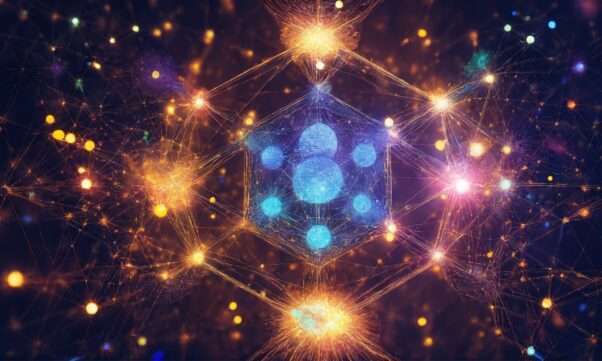
Time Efficiency
The most advanced benefit offered by Persona AI is its remarkable ability to speed up the content creation process. This inherent time efficiency reshapes traditional writing workflows, giving writers valuable freedom to focus on refining and refining the resulting text.
In a world where time is of the essence, character AI becomes a dynamic ally for writers who want to meet tight deadlines or maintain a consistent output schedule. By automating the initial stages of content creation, it speeds up draft generation, freeing authors from the time-consuming task of starting from a blank page.
Acceleration in material production does not mean compromise in quality; Rather, it is a strategic optimization of the creative process. Character AI efficiently handles the core aspects, including idea generation and initial drafting, allowing writers to focus on the intricate details that enhance their content. This collaboration ensures that the final output is not only timely but also in line with human skill expertise and creativity.
Consistency in Writing Style
In the complex world of content creation, Persona AI stands out as the guardian of style consistency, a key factor in maintaining brand image and consistency across different pieces of content. This inherent ability to maintain a consistent writing style goes a long way toward promoting a polished and professional image for both individuals and businesses.
A brand identity is like a unique fingerprint that makes a company or person stand out in a crowded digital environment. Character AI, with its ability to adapt and learn, ensures that this identity is not undermined, but rather reinforced, in every piece of content produced. Whether it’s a blog post, social media update, or marketing content, the writing style stays consistent and becomes an identifiable thread in the brand narrative.
Challenges and Limitations
Ethical Concerns
Character The adoption of AI introduces complex ethical terrain, raising questions about authenticity and transparency in content creation. As authors and businesses take advantage of this technology, they must approach the ethical landscape thoughtfully and responsibly. The lines between human-generated content and AI-generated content can become blurred, raising particular ethical concerns.
Striking a balance between the utility provided by AI and the need for genuine human expression is critical. When AI is involved in content creation, transparency becomes a cornerstone and clear communication is required. Consumers should be aware of whether they are consuming AI-generated content to maintain trust and uphold ethical standards.
Ensuring Uniqueness
In the world of content creation, the challenge of ensuring uniqueness remains as character AI continues to create integrated content. A delicate balance between the efficiency of automated power generation and the creativity of human ingenuity is critical to avoid redundant losses.
While AI can skillfully follow patterns and generate content based on learned data, the unique touch of human creativity brings a level of individuality that is difficult for algorithms to replicate. To solve this problem, writers and businesses adopting personality AI must actively inject their voice, insight, and creative thinking into their content.
Handling Complex Topics
Navigating the complexities of highly specialized or important subjects presents a challenge for character AI. While this technology excels in general content creation, its limitations become apparent when dealing with complex topics that require deep expertise. In this case, human intervention is not only beneficial but critical to ensure the desired accuracy, depth, and insight.
Fields such as scientific research, legal matters, or advanced technical topics often require nuances that are beyond the capabilities of AI algorithms. Human experts bring background knowledge, interpretive skills, and deep subject matter awareness, contributing to a level of expertise that can be difficult to achieve with artificial intelligence.
How to Use Character AI Effectively
Choosing the Right Tool
Choosing the right character AI tool is an important decision that depends on many important factors. Customization options play an important role, allowing users to tailor the AI’s output to their specific needs and preferences. The tool’s ability to produce high-quality, coherent content is critical, ensuring that the text produced meets the required standards of excellence. A user-friendly interface enhances the overall experience, making it easier for individuals to navigate and harness the power of AI without unnecessary complexity.
Additionally, the tool should demonstrate adaptability to different content types and industries, ensuring its relevance in different contexts. Transparency in AI operations, combined with ethical considerations such as preventing plagiarism and reducing bias, should also be an integral part of the tool’s capabilities.
Combining AI and Human Touch
To achieve the best results, a harmonious combination of AI automation and human creativity is essential. Striking a delicate balance between these two elements becomes the key to unlocking the full potential of content creation. In collaborative work, AI acts as a facilitator rather than an independent creator, ensuring that the final output retains a key element of authenticity while benefiting from AI efficiency gains.
Human creativity brings a unique touch, a depth of significance, emotion, and understanding that can be difficult for AI algorithms to replicate. At the same time, AI contributes by streamlining processes, increasing productivity, and providing valuable insights.
Real-world Examples
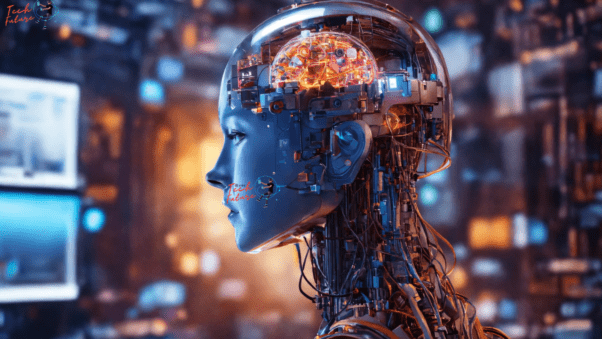
Success Stories
Across industries, success stories demonstrate the transformative impact of personality AI on the content creation process. In journalism, Persona AI tools have been proven to help create news articles faster, allowing newsrooms to keep pace with real-time events and provide timely updates. AI’s efficiency in analyzing data and crafting coherent narratives streamlines editorial workflows and helps make news coverage more dynamic and responsive.
In the world of e-commerce, personality AI has revolutionized product descriptions and marketing copy. By automatically generating compelling and contextual content, e-commerce platforms can display their products more engagingly, thereby positively influencing consumer decisions. This efficiency not only saves time but also ensures consistent and convincing brand messaging across countless product listings.
Industries Leveraging Character AI
Persona AI has become a transformative force across industries, reshaping the content creation landscape to meet the evolving needs of digital consumers. On the publishing side, newsrooms leverage Persona AI to instantly generate news articles and reports, ensuring real-time updates and relevance in a dynamic news landscape. Marketing and advertising departments leverage Persona AI’s adaptability to create persuasive and targeted copy to make marketing campaigns more effective across different platforms.
The e-learning industry takes advantage of artificial intelligence’s ability to automatically generate educational content, promoting personalized learning experiences for students. Bloggers and content creators optimize their workflows by leveraging Persona AI to remove creative bottlenecks and maintain consistent publishing schedules. Additionally, personalized AI powers conversational chatbots in customer service, providing fast and relevant responses for industries such as e-commerce and technical support.
Future Trends in Character AI
Advancements in Technology
As technology advances at a rapid pace, character AI is at the forefront of anticipated developments, poised for transformative growth. A major advance in contextual understanding is expected, with future iterations of character AI demonstrating a deeper understanding of the nuances, nuances, and context surrounding content creation. This improvement will help produce more nuanced and contextualized output, thereby improving the overall quality of content created.
Creative adaptation is another area where advancements in character AI are highly anticipated. Future iterations could be more adaptive, allowing the AI to reflect a wider range of writing styles, tones, and creative styles. This increased flexibility will enable Persona AI to meet the needs of more diverse content across different industries and creative campaigns.
Addressing Concerns About Job Displacement
AI as a Tool, Not a Replacement
In the era of advanced technology, it is crucial to address job loss concerns by emphasizing the role of role-based AI rather than as a replacement. Far from replacing human talent, character AI acts as a powerful companion, complementing and enhancing individual creativity.
Human creativity and critical thinking are an integral part of the complexity of content creation and an essential aspect of the process. Artificial intelligence should not be seen as a threat but as an enabler, simplifying everyday tasks and allowing humans to focus on the higher-order aspects of content development.
Impact on Content Quality
Maintaining High Standards
In the dynamic landscape of digital content creation, maintaining high content standards is critical. While role AI is a valuable tool for improving performance, human oversight plays a key role in maintaining quality and ensuring that content seamlessly aligns with strategic goals.
Technology’s ability to create coherent and contextual text is undeniable, but it lacks the nuances, creativity, and strategy that humans bring to the table. Human oversight becomes security, ensuring that content meets not only quantity requirements but also quality standards set by the brand or individual.
The Role of Human Editing
In the age of modern artificial intelligence, the role of human editors is an important and indispensable component of the content creation process. While AI excels in efficiency and automation, the keen eye and creative skills of human editors add a layer of depth and complexity to the final output. While AI can create coherent and contextualized text, human editors have a deep understanding of the nuances of language, culture, and the complexities of a given topic.
They can address nuances that artificial intelligence might miss, ensuring that content truly resonates with its target audience. Human editing goes beyond technical aspects; This includes injecting content with a unique voice, tone, and style that fits your brand or personal identity.
User Experiences and Feedback
Positive Outcomes
Real-world experiences of authors and businesses leveraging Persona AI have yielded several positive results, demonstrating the transformative impact of technology on content creation. Writers facing tight deadlines and creative blocks say their productivity has increased as character AI helps prepare first drafts, allowing them to focus on refining and enhancing their content. are Bloggers who maintain a consistent posting schedule and have overcome writer’s block, using character AI as a creative assistant to generate ideas and maintain a steady flow of engaging content.
Businesses leveraging personality AI for marketing and advertising are already seeing increased creativity in their campaigns. Adapting AI to crafting persuasive copy targeting specific demographics not only improves efficiency but also increases the impact of marketing messages, resulting in higher audience engagement and conversion rates.
Criticisms and Improvements
A transparent conversation about character AI should acknowledge valid criticisms and areas for improvement to promote continuous improvement in AI-assisted writing. A notable criticism revolves around potential bias in AI algorithms. Like any machine learning system, character AI can inadvertently retain biases in the training data, resulting in biased or incorrect output. Addressing this problem requires ongoing efforts to improve algorithms, diversify training datasets, and implement robust bias detection mechanisms.
Comparing Character AI with Traditional Writing Methods
Pros and Cons
| Aspect | Character AI – Pros | Character AI – Cons | Traditional Writing – Pros | Traditional Writing – Cons |
|---|---|---|---|---|
| Efficiency | Rapid content generation, automated proofreading, and quick data analysis. | May lack the nuanced emotional depth and creativity of human writing. | Human touch in creativity, emotional depth, and unique perspective. | Time-consuming, manual proofreading, and potential for errors. |
| Consistency | Consistent tone, language, and adherence to style guidelines. | Might lack the spontaneity and individuality of human expression. | Allows for unique authorial voice and varied styles. | Inconsistencies in tone and language may arise. |
| Creativity | Can suggest creative ideas based on data patterns. | May struggle to capture the intricacies of human imagination and emotions. | Unmatched human creativity, the ability to evoke emotions, and think outside predefined patterns. | Creativity might be subjective and vary in quality. |
| Adaptability | Adapts to changing trends and audience preferences. | May lack the intuition to predict cultural shifts or context nuances. | Human writers can anticipate and adapt to cultural changes and evolving reader expectations. | May struggle with rapid adaptation and trend analysis. |
| Error Handling | Efficient in identifying and correcting grammatical errors. | May misinterpret context, leading to errors in understanding intent. | Human writers can better grasp nuanced meanings, reducing the likelihood of misinterpretation. | Prone to human errors, especially in proofreading. |
| Cost | Potentially lower costs for routine tasks. | Initial setup costs and ongoing maintenance may be expensive. | No initial technology costs. | Costs can increase with manual labor for time-consuming tasks. |
| Collaboration | Can collaborate seamlessly with human writers. | May lack the spontaneity and improvisational skills of a human collaborator. | Rich collaboration, diverse perspectives, and human intuition. | Potential for communication challenges and differences in work pace. |
Finding the Right Balance
In the delicate dance between AI-assisted and traditional writing, writers must strive for a harmonious blend, leveraging the best of both worlds. Artificial intelligence provides unprecedented performance and helps with tasks like grammar checking, language enhancement, and even content creation based on patterns and data. However, writers must be careful not to let the mechanical precision of AI overshadow the inherent creativity and unique voice that human writers bring to the table.
Tips for Writers Using Character AI
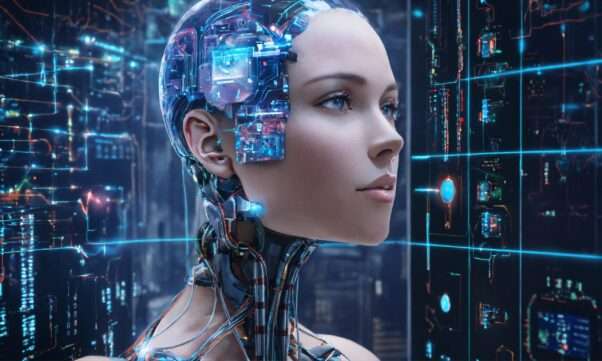
Embracing the Technology
Writers are at the crossroads of tradition and innovation, and the emergence of character AI should be seen as a promising ally rather than a threat. Adopting this technology not only signals adaptation but also opens up a realm of possibilities for creative collaboration.
Character AI can serve as a valuable tool, giving writers dynamic resources to enhance character development, dialogue, and plot complexity. By welcoming this technology partner with an open mind, writers can open up new dimensions of storytelling. It’s not about relinquishing control, but about using AI as a partner in the creative process.
Staying Creative Alongside AI
In the era of AI assistance, writers must remember that while technology may streamline some aspects of their art, creativity remains an innate human strength. Writers should think of AI not as a replacement for creativity, but as a companion in specific tasks, so they can focus on what makes their voice unique.
Embracing creativity means trying out ideas, taking risks, and adding your unique perspective to AI-generated content. Writers should see AI as a tool that complements their imagination, providing help in areas such as grammar, structure, and even creating first drafts.
The Future Landscape of Writing
A Harmonious Blend of Human and AI Writing
In the ever-changing landscape of content creation, envisioning a future in which humans and AI co-exist in harmony opens the door to new realms of possibility. The synergy between human creativity and AI performance creates a dynamic convergence that changes the way we conceptualize and produce written content.
Imagine a scenario where writers employ AI corrections for tasks like grammar refinement, data analysis, and first drafts, freeing up more time and mental space to explore areas of imagination that need more attention. Only human intuition can use it. This harmonious combination creates an innovative narrative tapestry in which the strengths of each narrative—the emotional depth of human expression and the analytical power of AI—complement and enhance each other.
Conclusion
Important points to review:
Overall, the combination of character AI and human authors creates a symbiotic relationship, opening up a future where performance and creativity merge. Character AI is a valuable tool that can handle specific aspects of writing, while human writers retain their unique abilities for creativity and emotional depth. The harmonious combination of these strengths creates a dynamic landscape for content creation, promising a future where performance and creativity are not mutually exclusive but mutually reinforcing.
Encouragement for Embracing AI in Writing
Going forward, writers are urged to embrace the opportunities presented by character AI. This technology is not a threat but a catalyst for growth and innovation in the age of digital writing. By leveraging AI as a companion rather than a competitor, writers can explore new dimensions of storytelling, become more efficient, and develop their craft.
Embracing artificial intelligence in writing means pushing the boundaries of creativity, embracing the combination of human intelligence and technological support, and bringing a richer, more detailed, and more efficient future to the writing world. It is a journey into a literary renaissance, where human creativity flourishes with the capabilities of artificial intelligence, ensuring a compelling and grounding narrative landscape.
FAQs
Can Character AI Mimic Human Writing Creativity?
A: While character AI has come close, true human creativity is still unmatched. Artificial intelligence is a powerful tool that augments rather than replaces human creativity.
How can authors ensure their content is unique using character AI?
A: Authors should be actively involved in the customization process, injecting their style and unique perspective. Additionally, human editors are critical to ensuring content authenticity.
Are there ethical considerations when using character AI for writing?
A: Yes, transparency and honesty are very important. Authors and businesses must disclose their use of AI-generated content to maintain the trust of their audience.
Will role AI lead to job losses in the writing industry?
A: No, character AI should be seen as a complementary tool that allows writers to sharpen their skills and focus on higher-level creative tasks.
With the rise of character AI, how can writers adapt to the changing writing landscape?
A: Authors should embrace higher expertise, stay abreast of AI developments, and view character AI as a collaboration rather than a threat.
